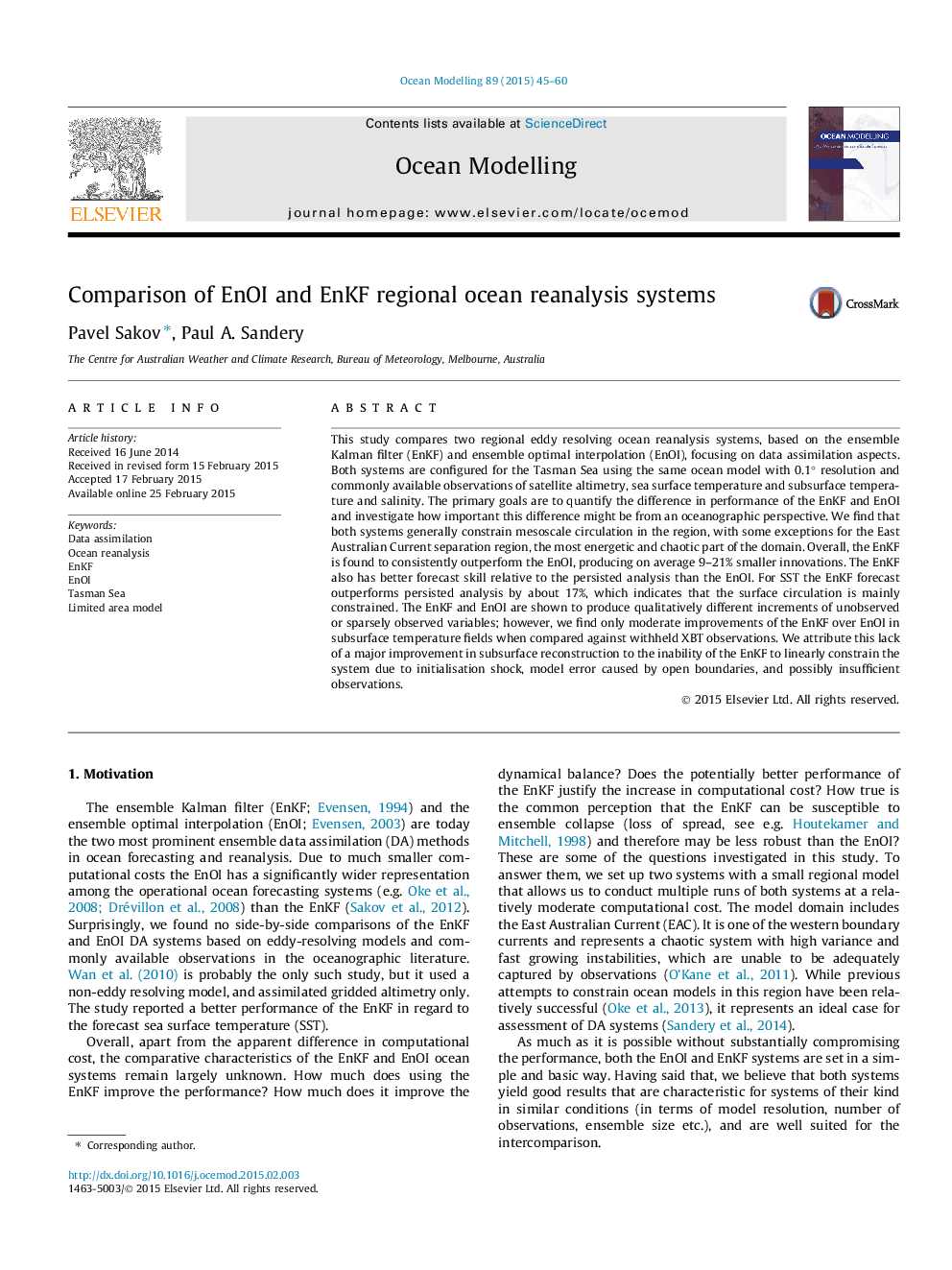| Article ID | Journal | Published Year | Pages | File Type |
|---|---|---|---|---|
| 4552038 | Ocean Modelling | 2015 | 16 Pages |
•We compare performance of the EnKF and EnOI systems for the Tasman Sea.•The EnKF consistently outperforms the EnOI, with 9–21% smaller innovations.•The EnKF and EnOI produce qualitatively different increments of unobserved variables.•The EnKF is shown to run in a substantially nonlinear regime.
This study compares two regional eddy resolving ocean reanalysis systems, based on the ensemble Kalman filter (EnKF) and ensemble optimal interpolation (EnOI), focusing on data assimilation aspects. Both systems are configured for the Tasman Sea using the same ocean model with 0.1° resolution and commonly available observations of satellite altimetry, sea surface temperature and subsurface temperature and salinity. The primary goals are to quantify the difference in performance of the EnKF and EnOI and investigate how important this difference might be from an oceanographic perspective. We find that both systems generally constrain mesoscale circulation in the region, with some exceptions for the East Australian Current separation region, the most energetic and chaotic part of the domain. Overall, the EnKF is found to consistently outperform the EnOI, producing on average 9–21% smaller innovations. The EnKF also has better forecast skill relative to the persisted analysis than the EnOI. For SST the EnKF forecast outperforms persisted analysis by about 17%, which indicates that the surface circulation is mainly constrained. The EnKF and EnOI are shown to produce qualitatively different increments of unobserved or sparsely observed variables; however, we find only moderate improvements of the EnKF over EnOI in subsurface temperature fields when compared against withheld XBT observations. We attribute this lack of a major improvement in subsurface reconstruction to the inability of the EnKF to linearly constrain the system due to initialisation shock, model error caused by open boundaries, and possibly insufficient observations.
